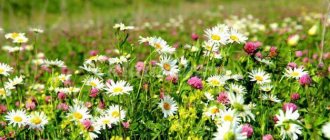The best plants
- Chlorophytum - is a rosette of leaves with “mustaches”, at the ends of which there are small “babies”. The plant is unpretentious, recovers quickly, and tolerates irregular watering. Perfectly purifies the air from bacteria, viruses and exhaust gases;
- Crassula, or Crassula, is a fast-growing tree-like plant with fleshy, glossy leaves. Broken cuttings can be used for propagation. Unpretentious. Helps improve performance;
- Fern - has a lush, beautiful appearance. Grows quickly and recovers easily. Undemanding in care, can grow in partial shade. Helps cope with stress and relieve fatigue, improves concentration;
- Citrus fruits are beautiful trees that can grow both in the shade and in the light. They contain many essential oils that have bactericidal properties and neutralize harmful microorganisms. Citrus fruits also cope well with fatigue, eliminate irritability, calm and improve sleep;
- Hamedorea graceful is an ornamental deciduous plant similar to a palm tree. Unpretentious, can grow in partial shade. Excellent air humidification. Purifies the air by eliminating hazardous substances released by plastics;
- Hibiscus, or Chinese rose, is a shrub that can grow in partial shade. The stems are elastic and resistant to damage. Hibiscus has well-defined stems, leaves and bright flowers, which will help children study the structure of plants;
- Tradescantia is an ampelous plant that can be hung in a flower pot. Undemanding to watering and lighting. Perfectly humidifies and purifies indoor air. It is distinguished by its ability to neutralize electromagnetic radiation;
- Kalanchoe - secretes phytoncides that neutralize fungi and bacteria. It has medicinal properties: anti-inflammatory, wound healing. Helps with cough, runny nose, flu, furunculosis;
- Schefflera is a beautiful decorative deciduous unpretentious plant. It perfectly purifies the air from harmful substances present in cigarette smoke, such as nicotine and various tars.
Preview:
Summary of organized activities
"Taking care of indoor plants"
Objectives: To summarize children’s ideas about caring for indoor plants; consolidate children's knowledge about the basic needs of indoor plants, generalize knowledge about how to care for plants (watering, dust removal, loosening); introduce the rules of watering plants; develop speech, develop work skills, cultivate a love for plants, a desire to care for them.
Material: Indoor plants, basin, watering cans with water, rags, tassels, oilcloths, aprons.
V-l: Guys, listen to what poem Anya knows!
Anya reads a previously learned poem:
V-l: Let's once again admire our garden on the window and remember what kind of indoor plants grow in our place.
Vl: Let's play a game: now each of you will make a wish for a houseplant, tell us about it without naming it. And we will guess the plant and name it.
Q: What do plants need to live?
V-l: Yes, guys, water is very important for flowers. How to properly water indoor plants?
The child reads a previously learned poem:
V-l: Guys, imagine that the owners are going on vacation, and they have indoor plants at home. If they leave, there will be no one to water the flowers, and they may die. What to do? How to go on vacation and prevent your indoor plants from wilting?
Children solve a problem situation: Give flowers to neighbors; give the keys to the neighbors so that they can come and water; pour more water into the trays; put them in a bath of water; take with you; put one end of the rag into the bucket and the other into the pot; Draw the hose from the bucket as well; leave dad at home; buy a special robot, etc.
Vl: Let's remember what else do plants need to feel good? How to care for indoor plants?
Q: Why do you need to loosen the soil? What do you use to loosen the soil?
Children: The earth is loosened so that water is well absorbed, so that it is easier for the roots to breathe. You need to loosen it with sticks so as not to injure the roots, since some plants have roots close to the surface.
V-l: What else needs to be done?
Q: How to properly wash plants?
Children: Large leaves are wiped with a cloth, plants with small leaves are placed in a basin, we cover the soil with oilcloth so as not to wash it away, and water from a large watering can or spray bottle; dust is brushed off from leaves with a rough surface with a brush.
V-l: Our plants also need care. Shall we help them? Well! Then put on your aprons and get to work!
Source
Plants that should not be grown in a child's room
The appearance of some plants can cause fear in a child
In addition to useful plants, there are many other decorative and beautifully flowering indoor flowers that are prohibited from growing in rooms where children are present. And they are considered prohibited due to their dangerous substances found in the foliage of the potted flowers themselves. By breaking off a leaf of such a plant and chewing it, you can get poisoning or an unwanted allergic reaction that will appear on the child’s skin in the form of rashes.
Poisonous plants
All kids love to learn new things, they are interested in: what, how and why. Some plant leaves contain poisonous sap, which can cause serious poisoning and allergic reactions.
List of poisonous plants:
- nightshade - after flowering, huge, attractive berries are formed in place of the bolls, which are poisonous to humans
- alocasia – the leaves contain hydrocyanic acid and alkaloids
- oleander is a beautifully flowering plant characterized by the fact that all vegetative parts contain juice that is poisonous to humans
The above plants are not recommended to be grown in children's premises, as well as:
Dieffenbachia
Bush and tall species of Dieffenbachia cannot be grown not only in nurseries, but also in preschool educational institutions
Dieffenbachia is considered the most poisonous indoor flower, since the juice of the leaves is very poisonous. In ancient times, slaves were forced to chew Dieffenbachia leaves in order to make their voices disappear and they could not say anything.
The poisonous juice gets on the skin and causes a severe burning sensation. And if the child also rubs his eyes with his hand, it will be impossible to do without medical help.
Plants that can injure children
If tall species of sansevieria are prohibited for cultivation in children's rooms and in children's institutions, it is recommended to pay attention to low-growing varieties, for example, the sansevieria variety Honey
Many people like the inhabitants of dry areas - cacti and succulents. If for an adult these are wonderful plants that do not require close care, then for children they can cause great harm, since they have sharp thorns.
In addition to cacti, you should be careful when growing plants with long leaves, such as sansevieria or mother-in-law's tongue. This is undoubtedly a useful plant, but long leaves can play a cruel joke. The fact is that a child, crawling around the house, can stand on his feet and reach a plant standing on the table, pull a beautiful long leaf and throw a large pot onto himself from the table. To avoid injury, you should not grow the plant in your baby’s room, especially since the leaf is very sharp and can cause injury.
Plants that cause fear
Sundew is a “scary” plant for children. God forbid a child sees it swallowing an insect. The baby will have an insurmountable fear that someday this plant will bite him too.
It's no secret that childhood is a time of all sorts of imagination and imagination. Therefore, you need to be extremely careful when choosing plants. You can buy a completely harmless plant that only brings health benefits, but it will have intricate foliage that can frighten a child.
It is not recommended to buy tall palm trees and vines for the children's room. These include: monstera, dracaena, scindapsus, philodendron. The named flowers, after they grow, on a sunny day can cast terrible shadows in which children can see, thanks to their imagination, terrible monsters and monsters.
Plants that cause allergies
It is believed that hydrangea with exotic flower colors can cause allergies. However, before throwing this flower away, you need to check whether this is actually the case. After all, not all people have a plant that can cause a similar reaction.
Indoor potted flowers that cause irritation to the mucous membranes and skin:
- hydrangea
- azalea
- pelargonium
Having named the list of plants prohibited for cultivation due to the fact that they cause allergic reactions, it is necessary to make a reservation that these plants are beneficial to health, therefore, before throwing them aside, it is recommended to check whether you are allergic to them or not. If there are no signs, the plants can be grown.
But azalea is considered a poisonous plant, the juice of which can cause severe allergies. Therefore the flower is not recommended.
The world of flowers is a wonderful world that not only helps to purify the air and improve the atmosphere at home, thanks to the beauty and variety of potted flowers, you can introduce a child to the world of beauty, show how plants live, grow and reproduce, and teach a child to work. By caring for plants, kids acquire the skills of responsibility for all life on Earth. They learn that everything needs care and that only work and perseverance will help preserve the beauty of the living world.






